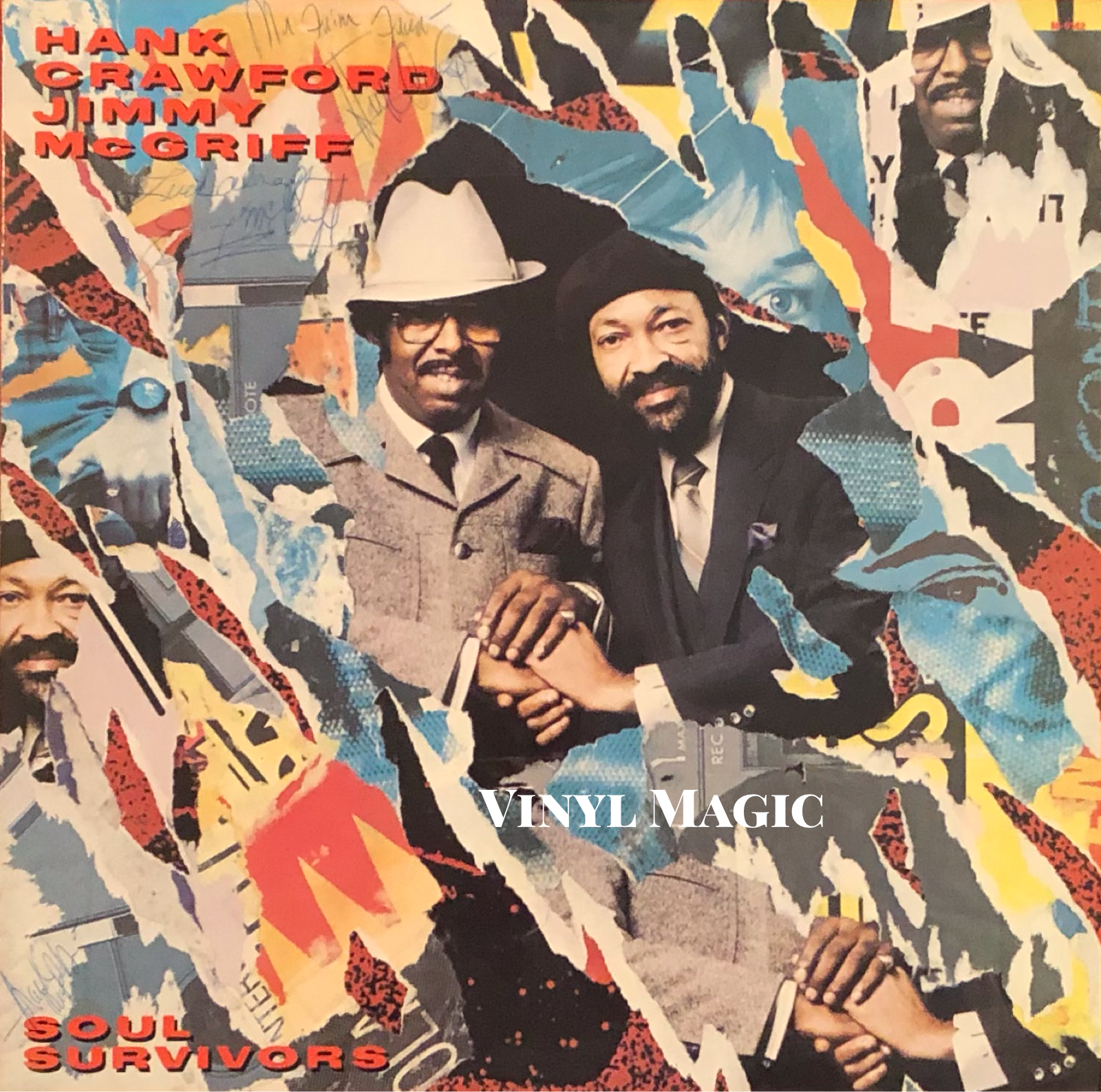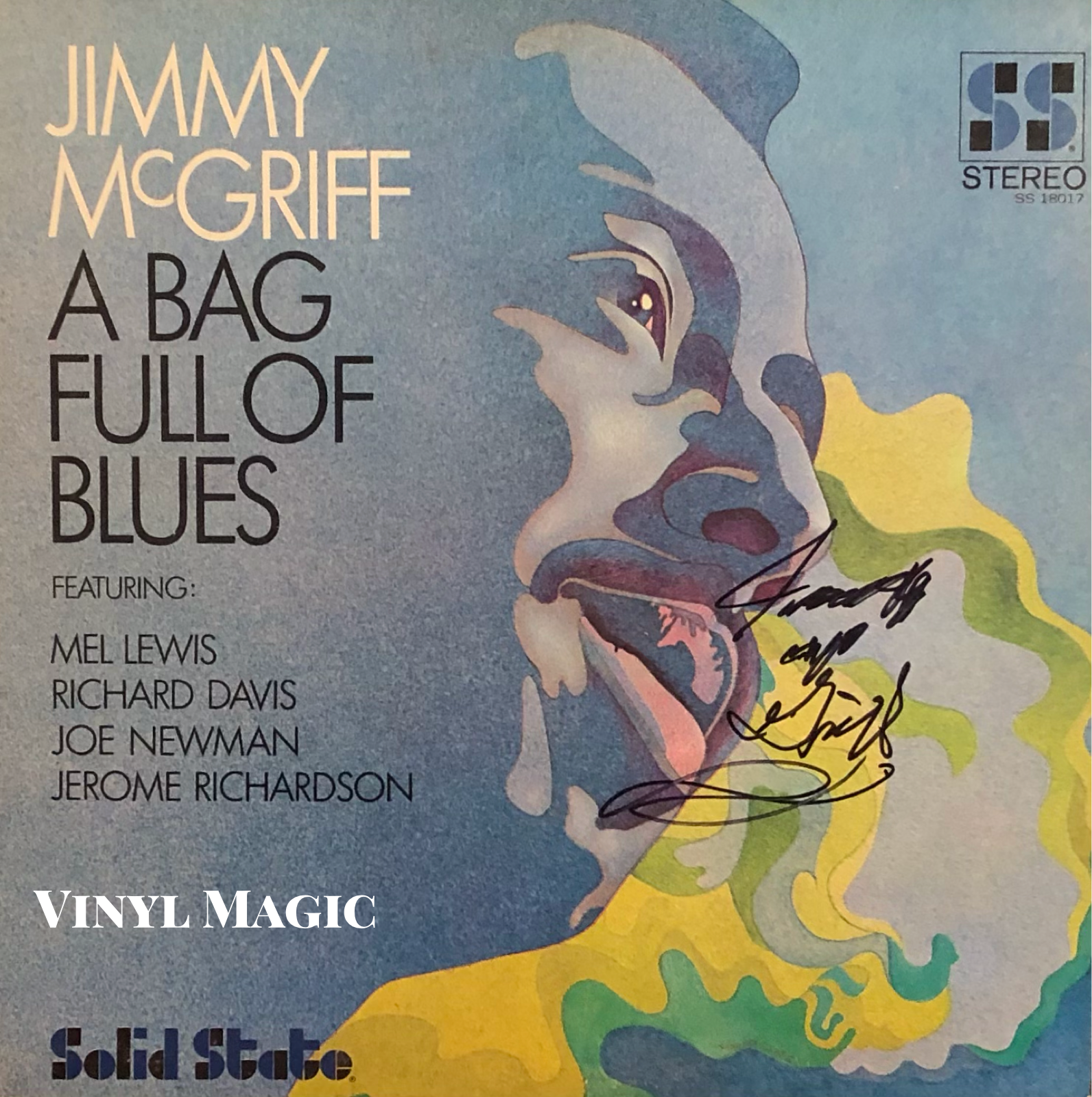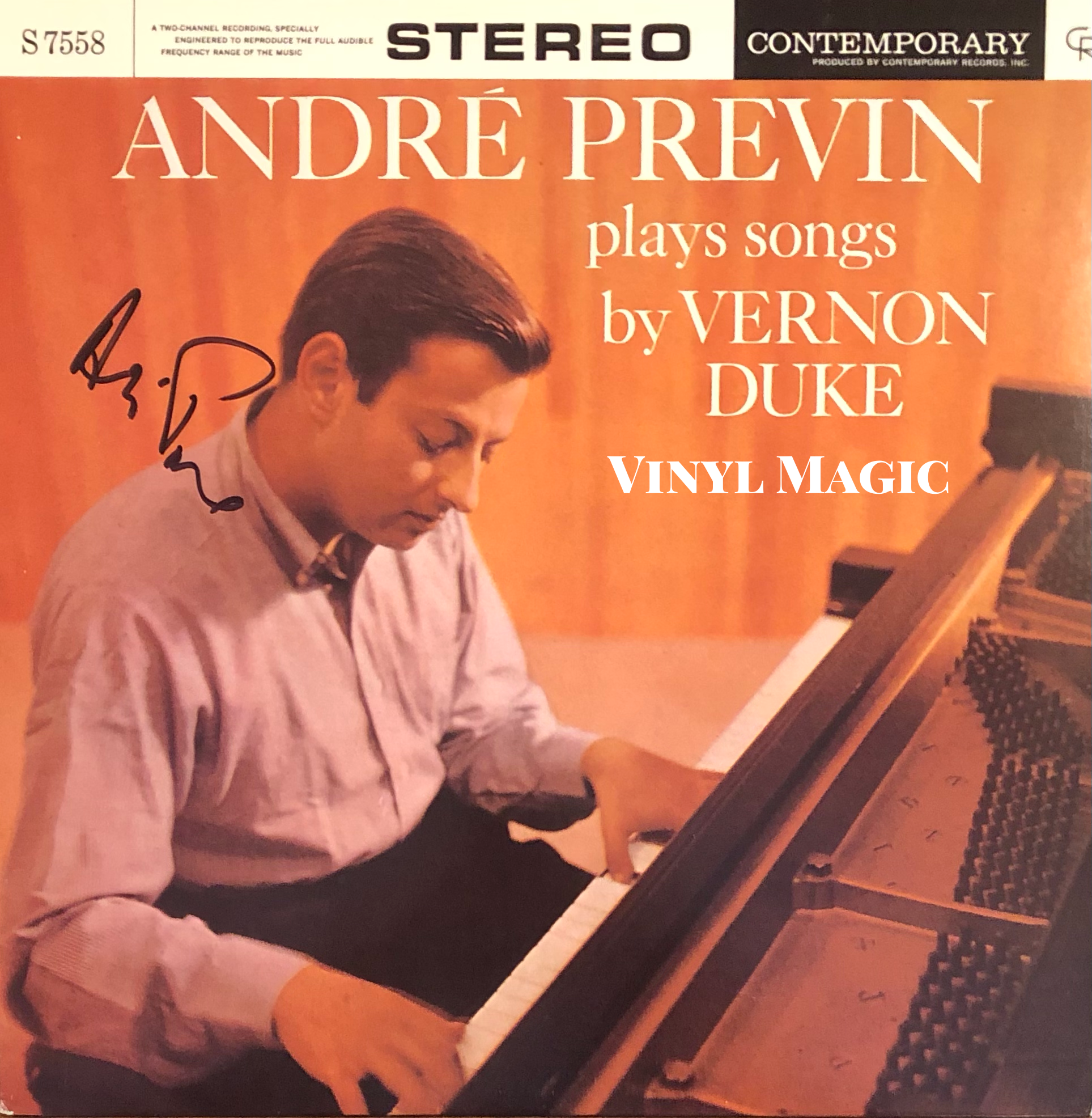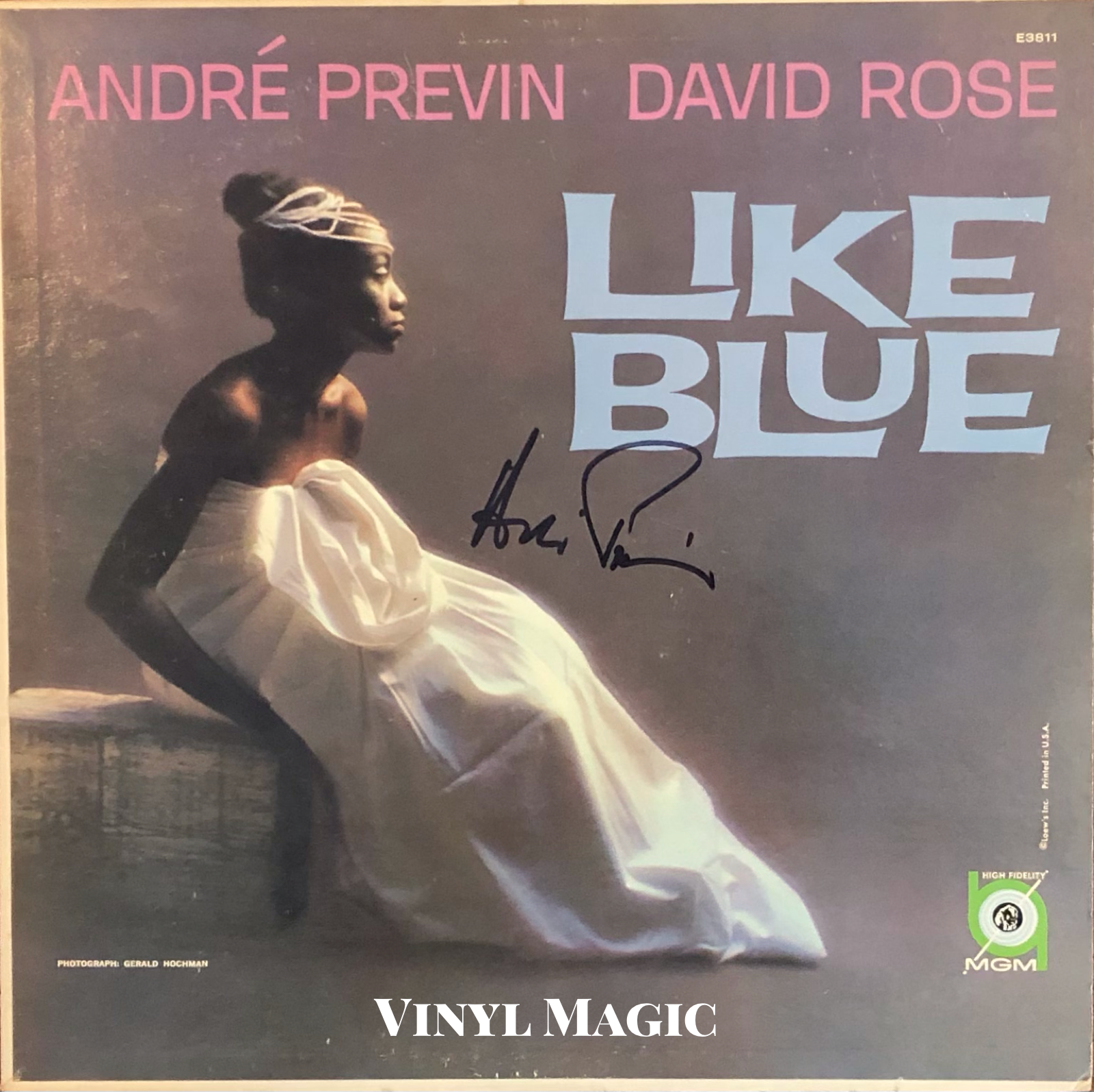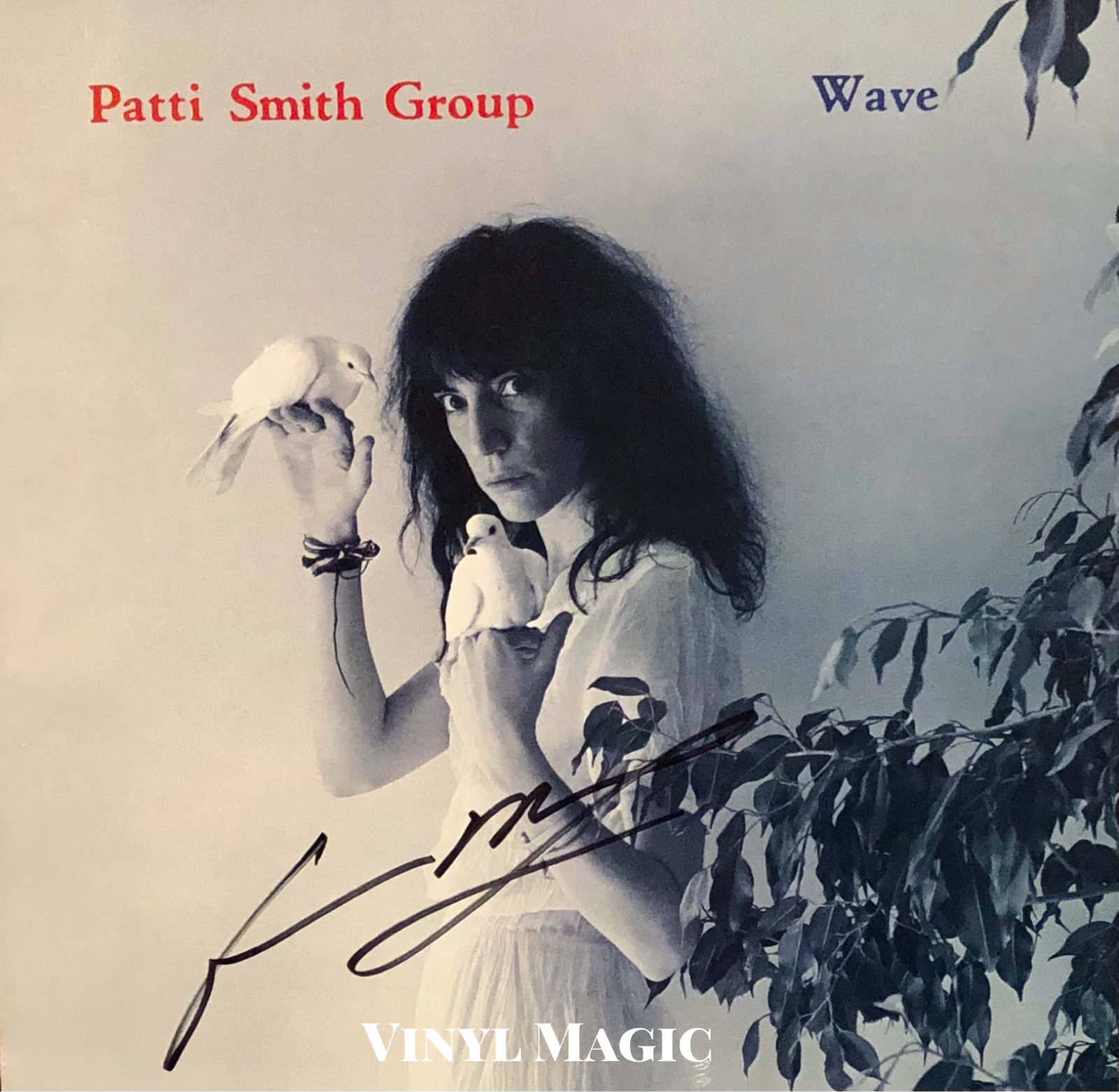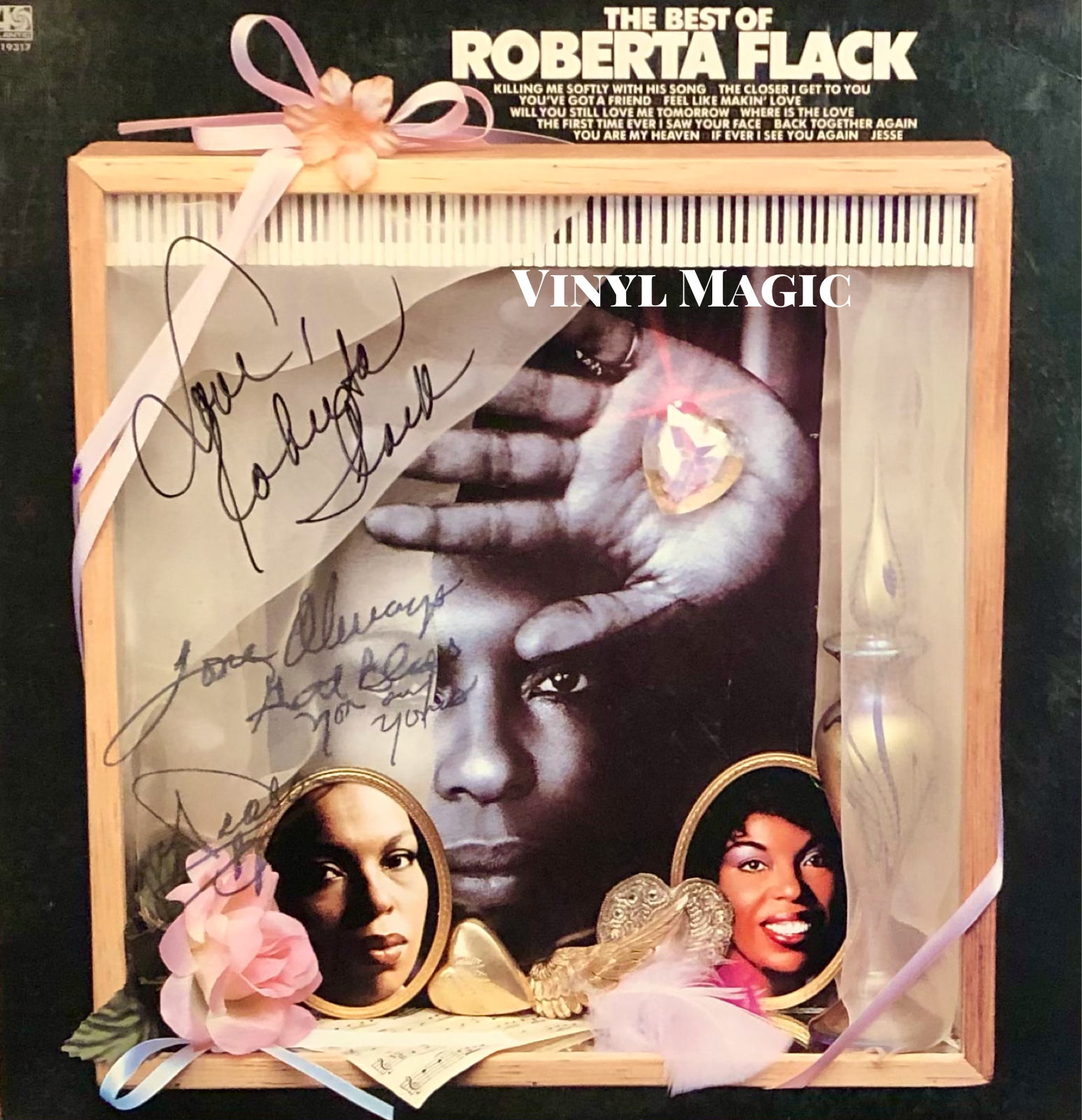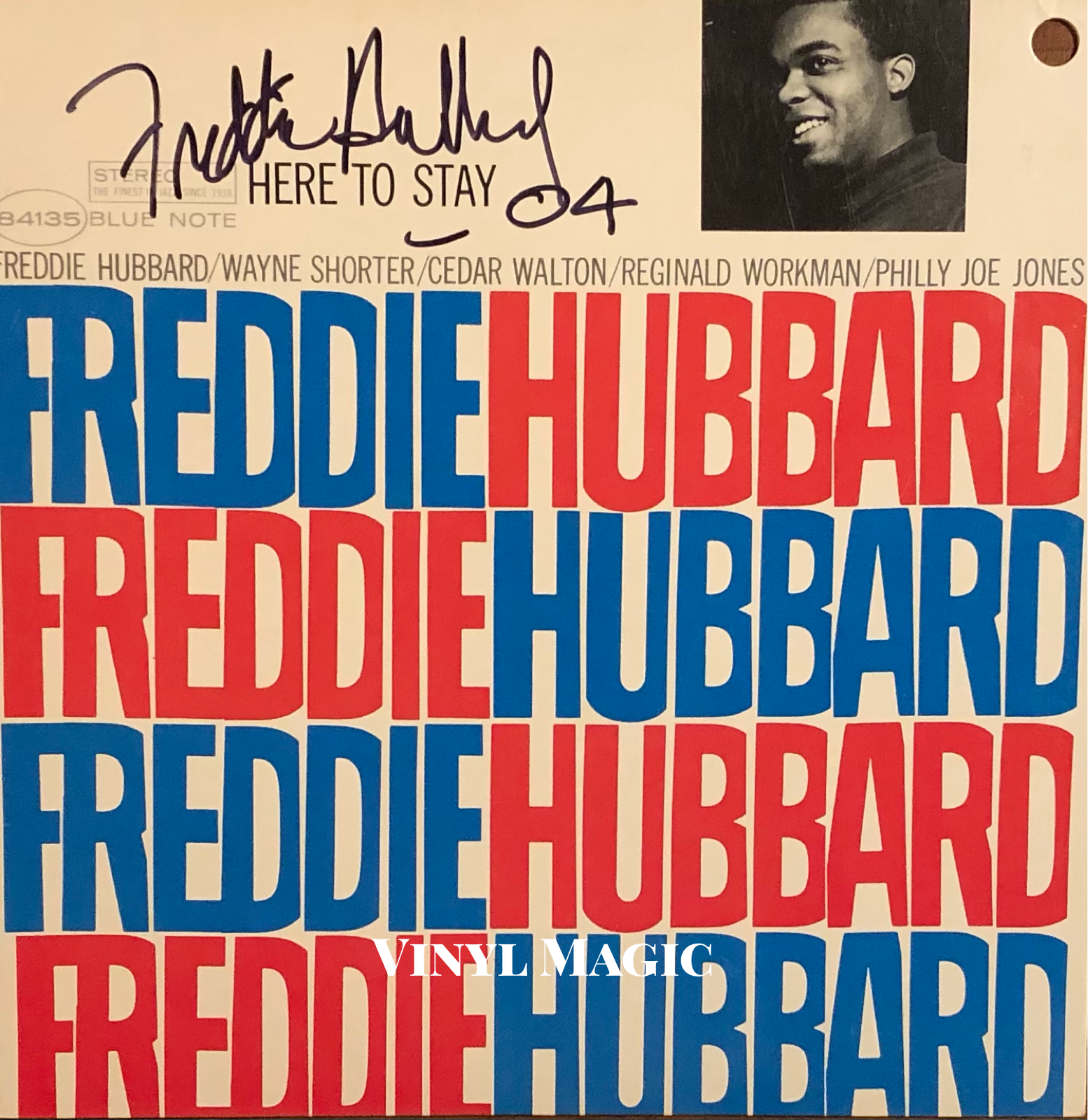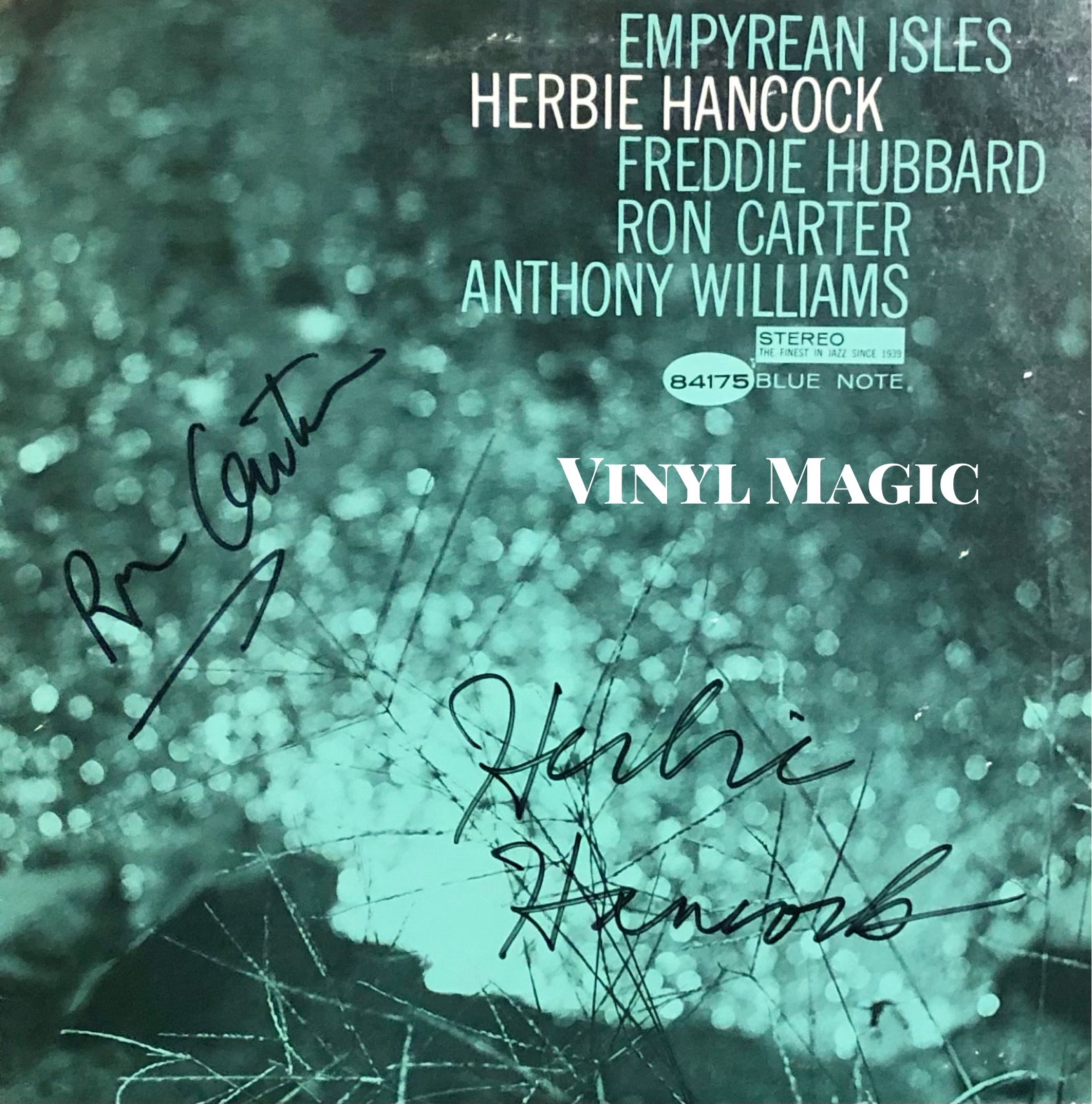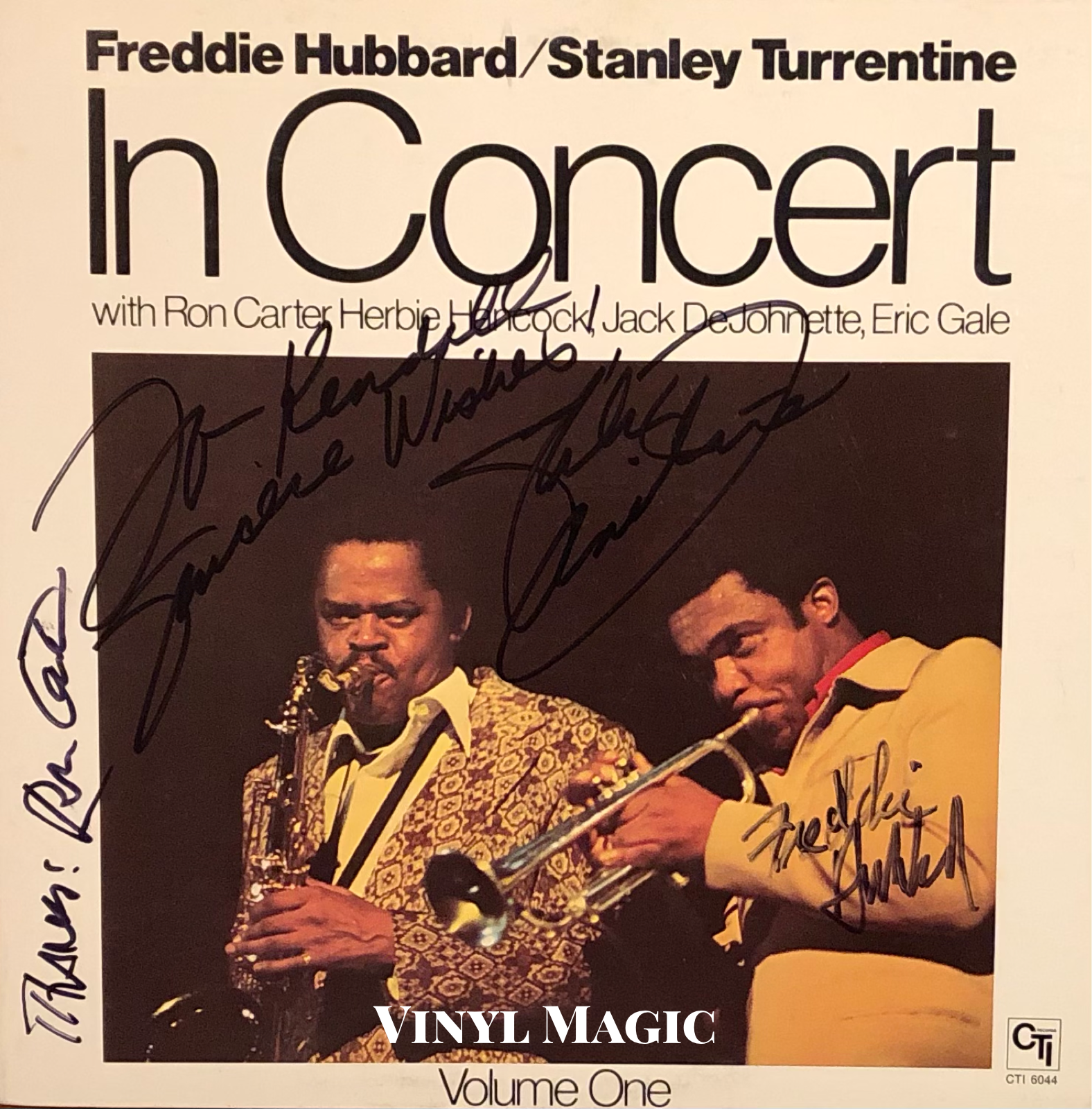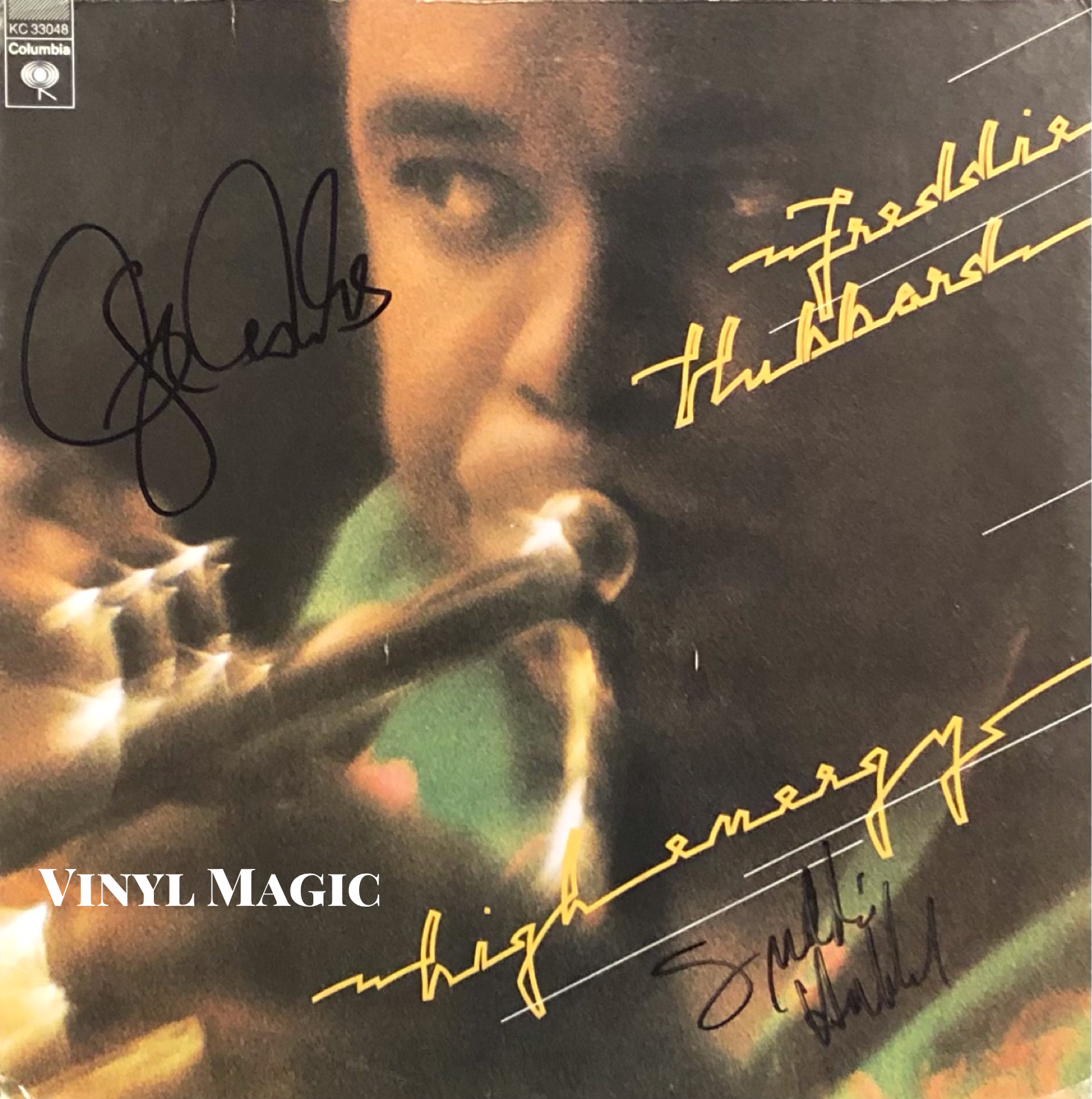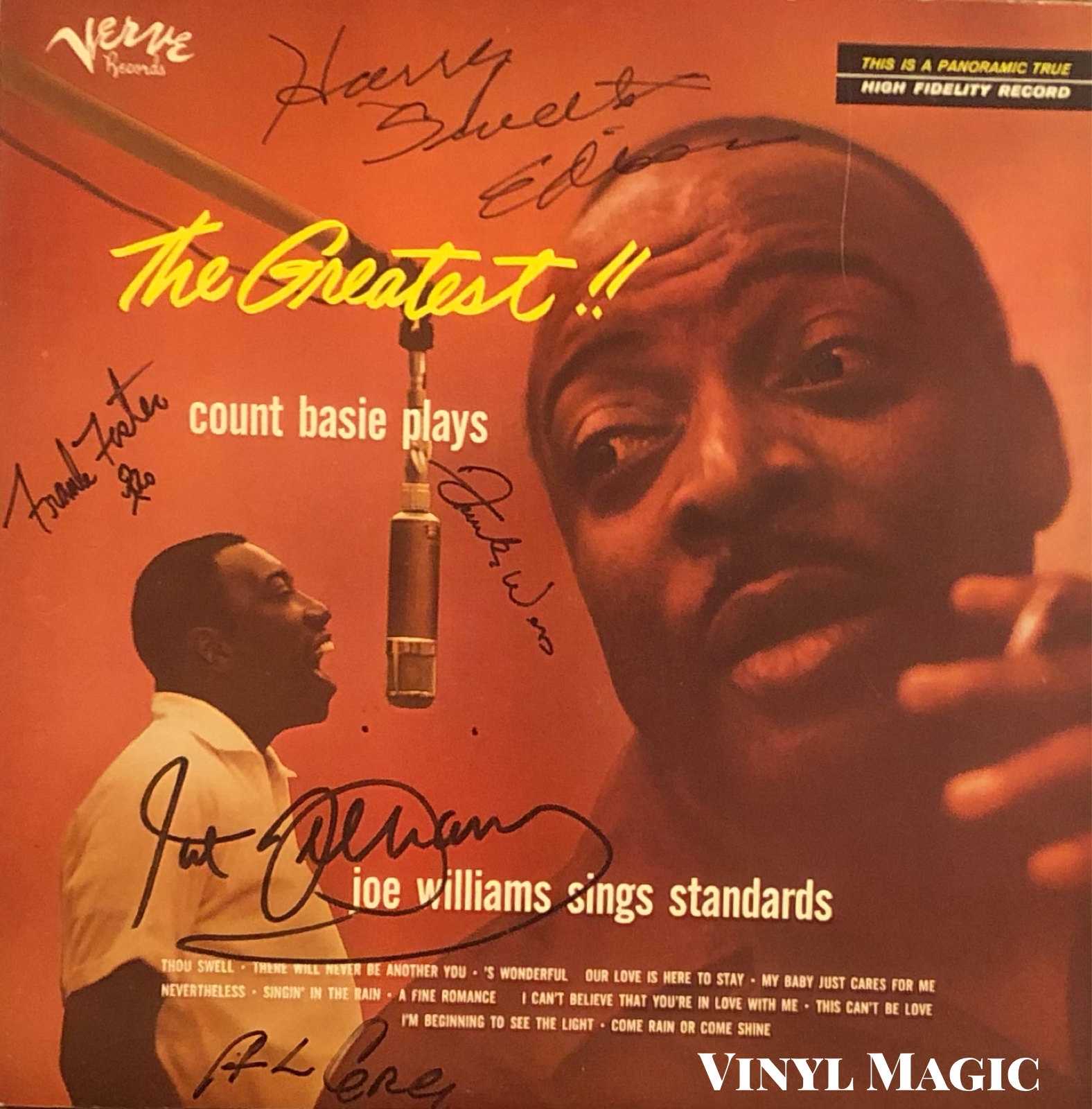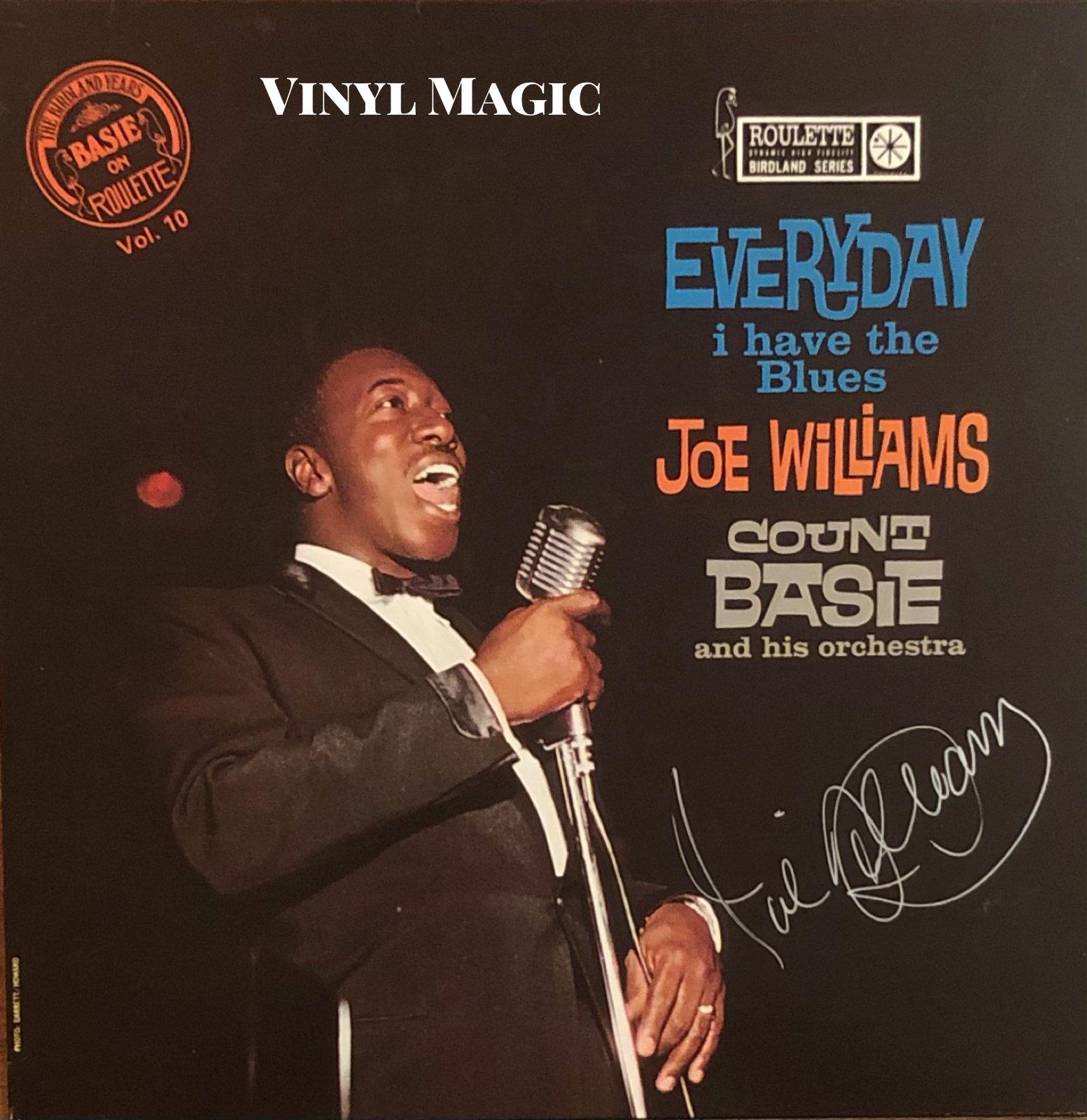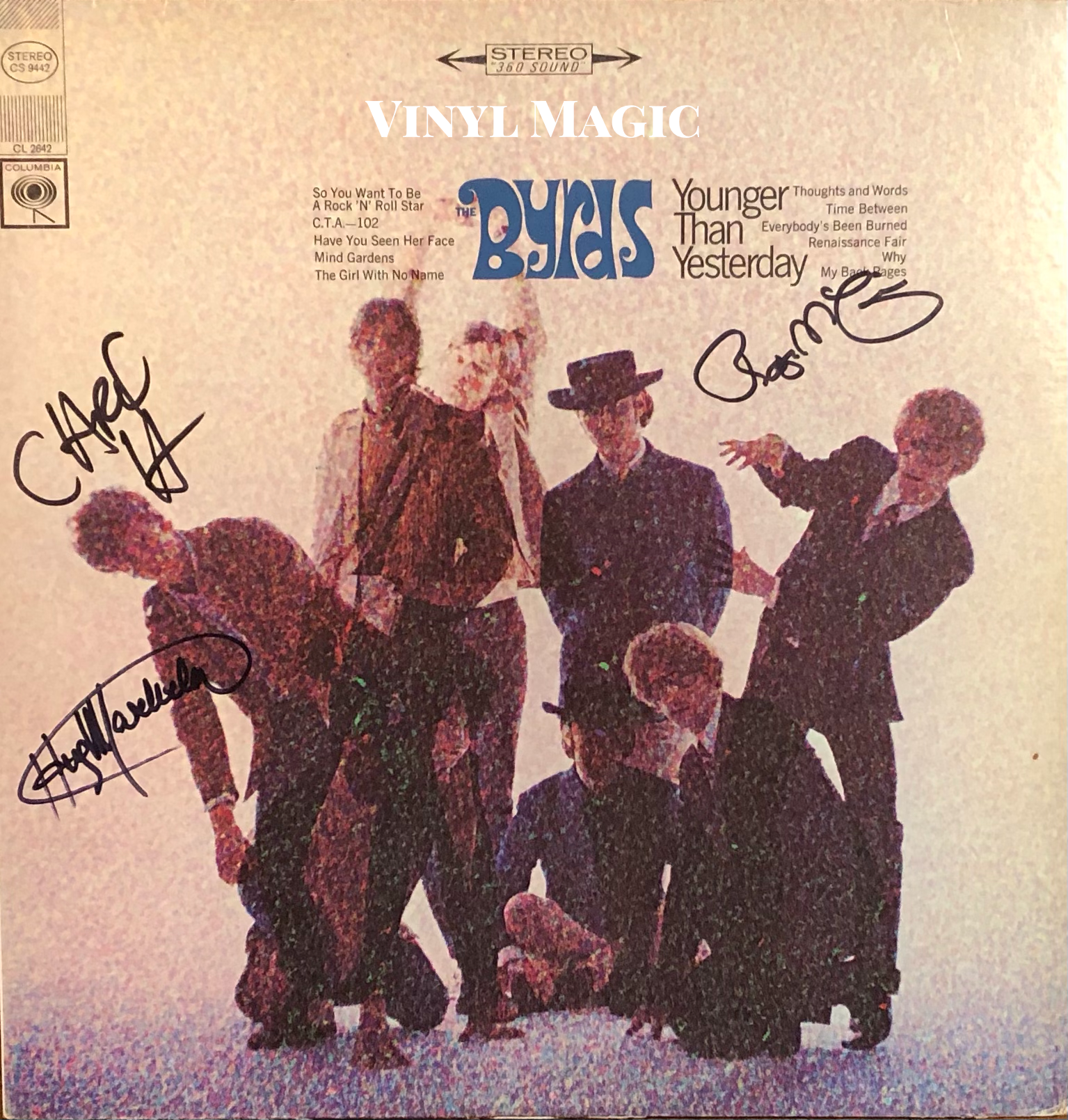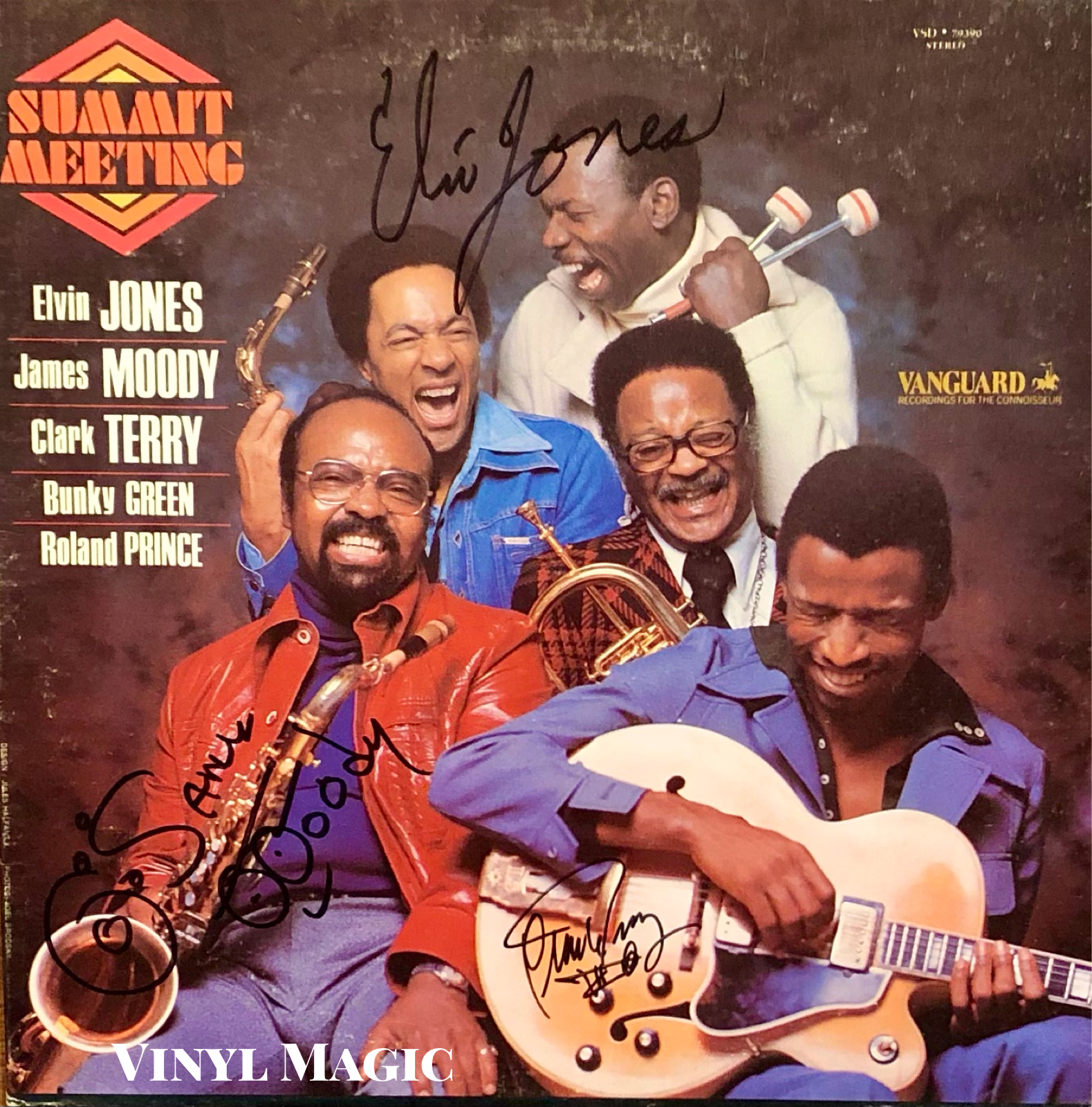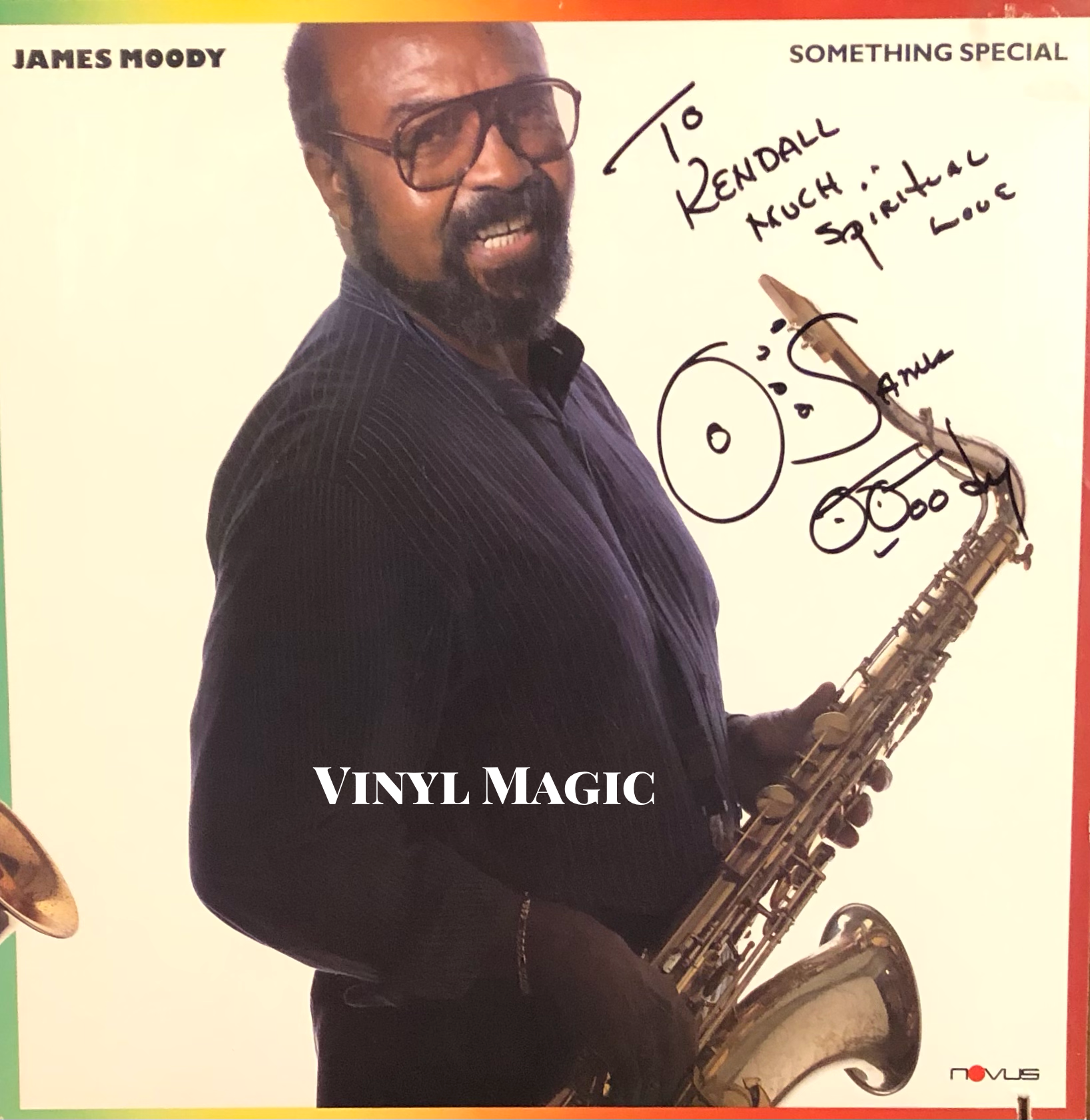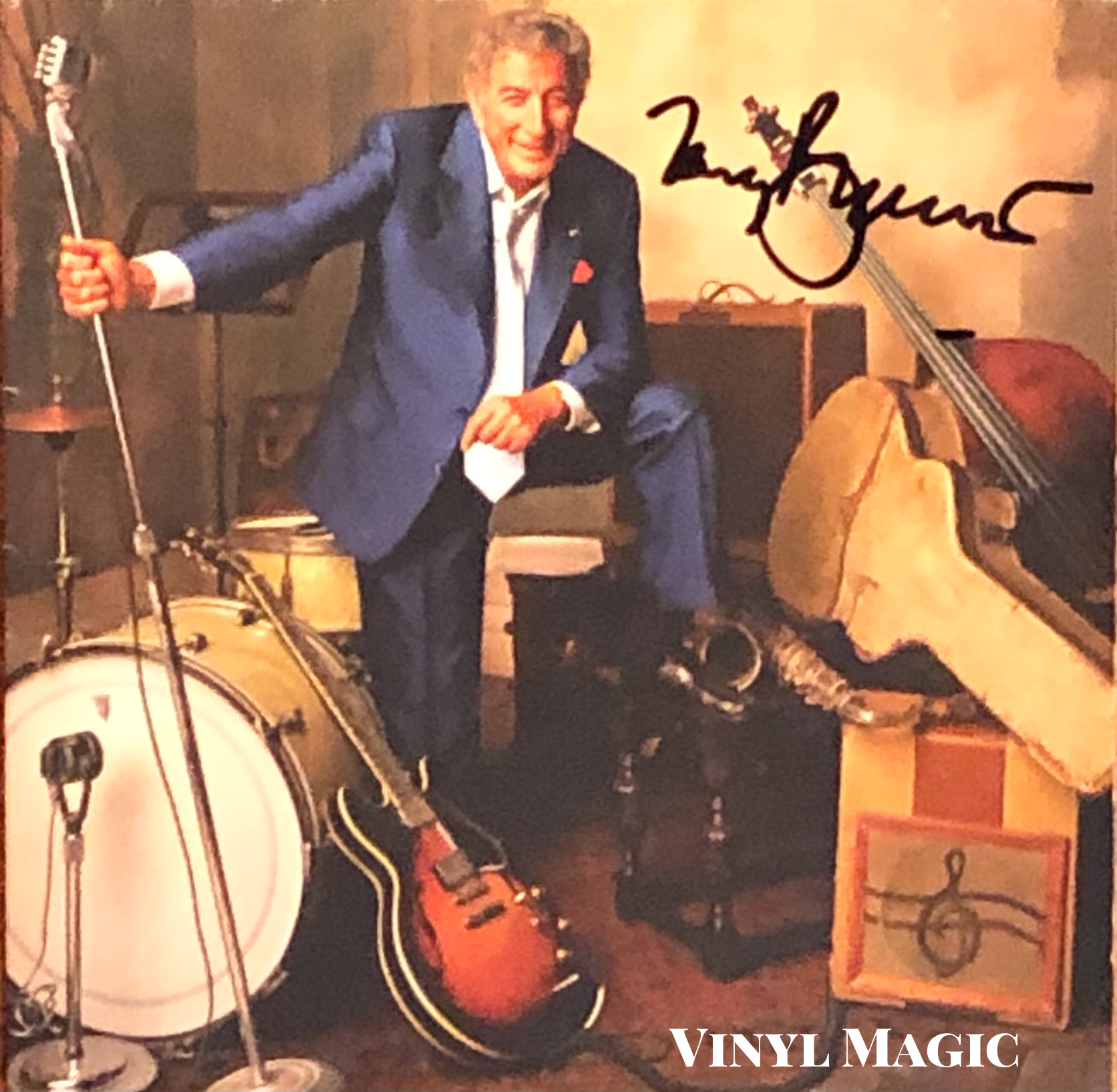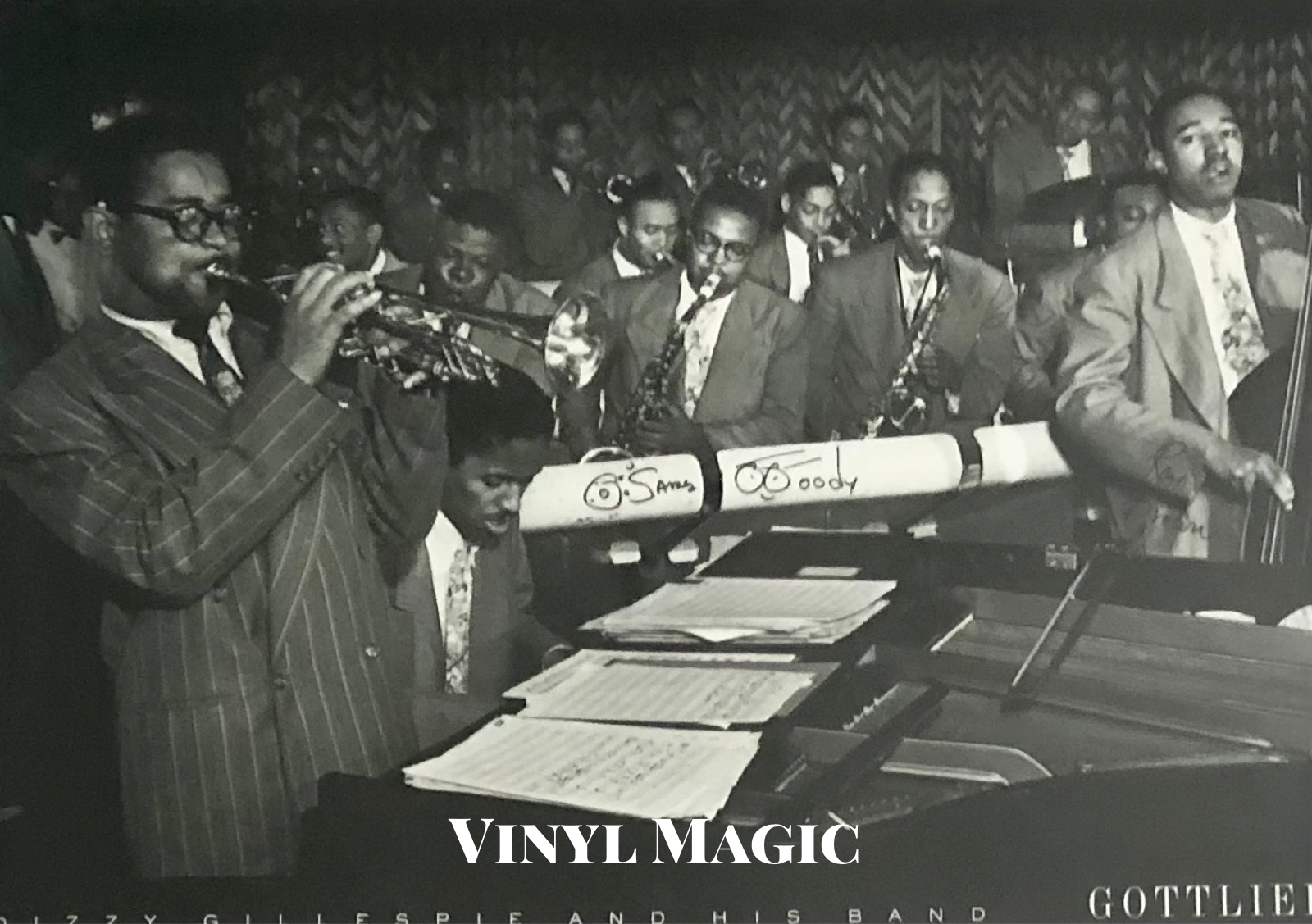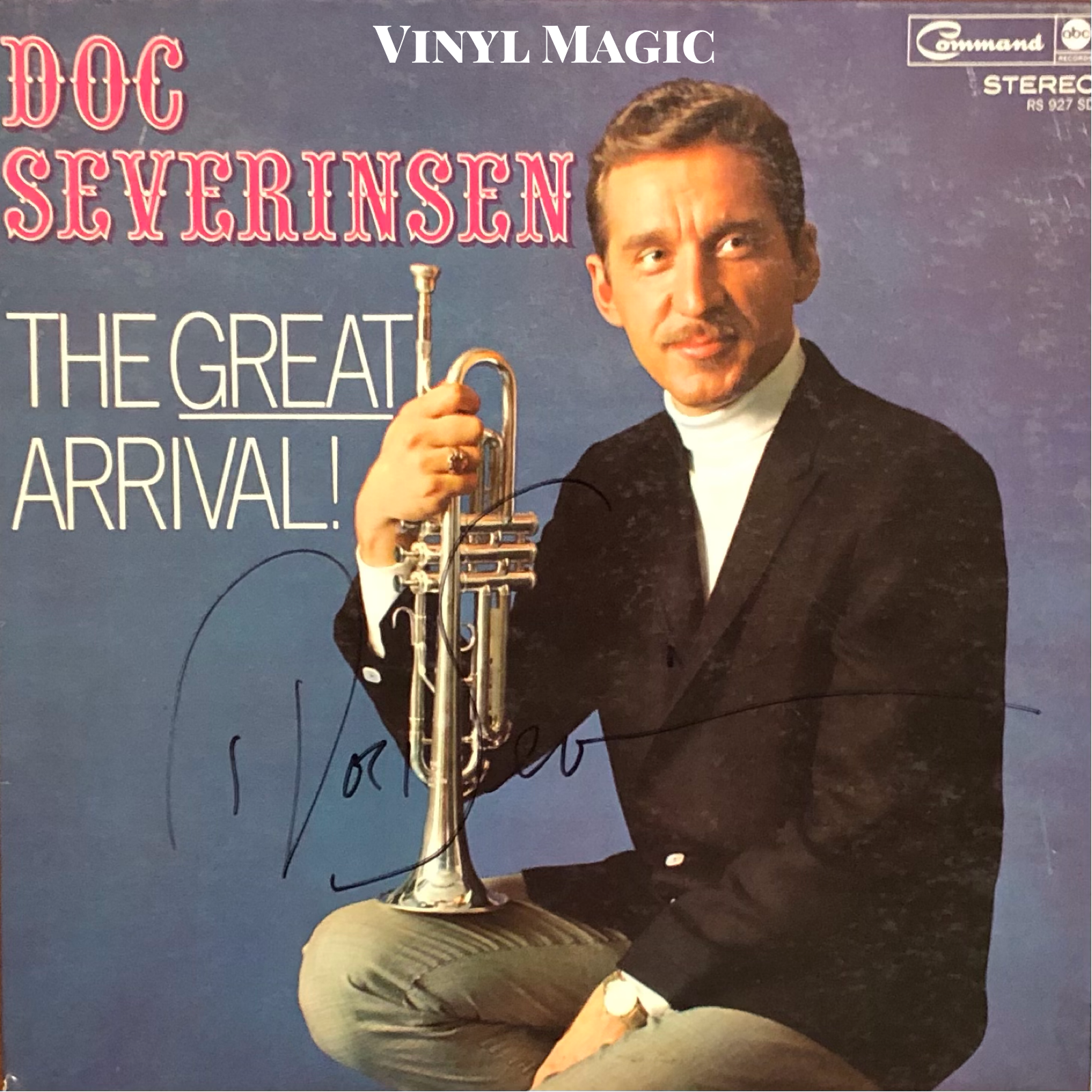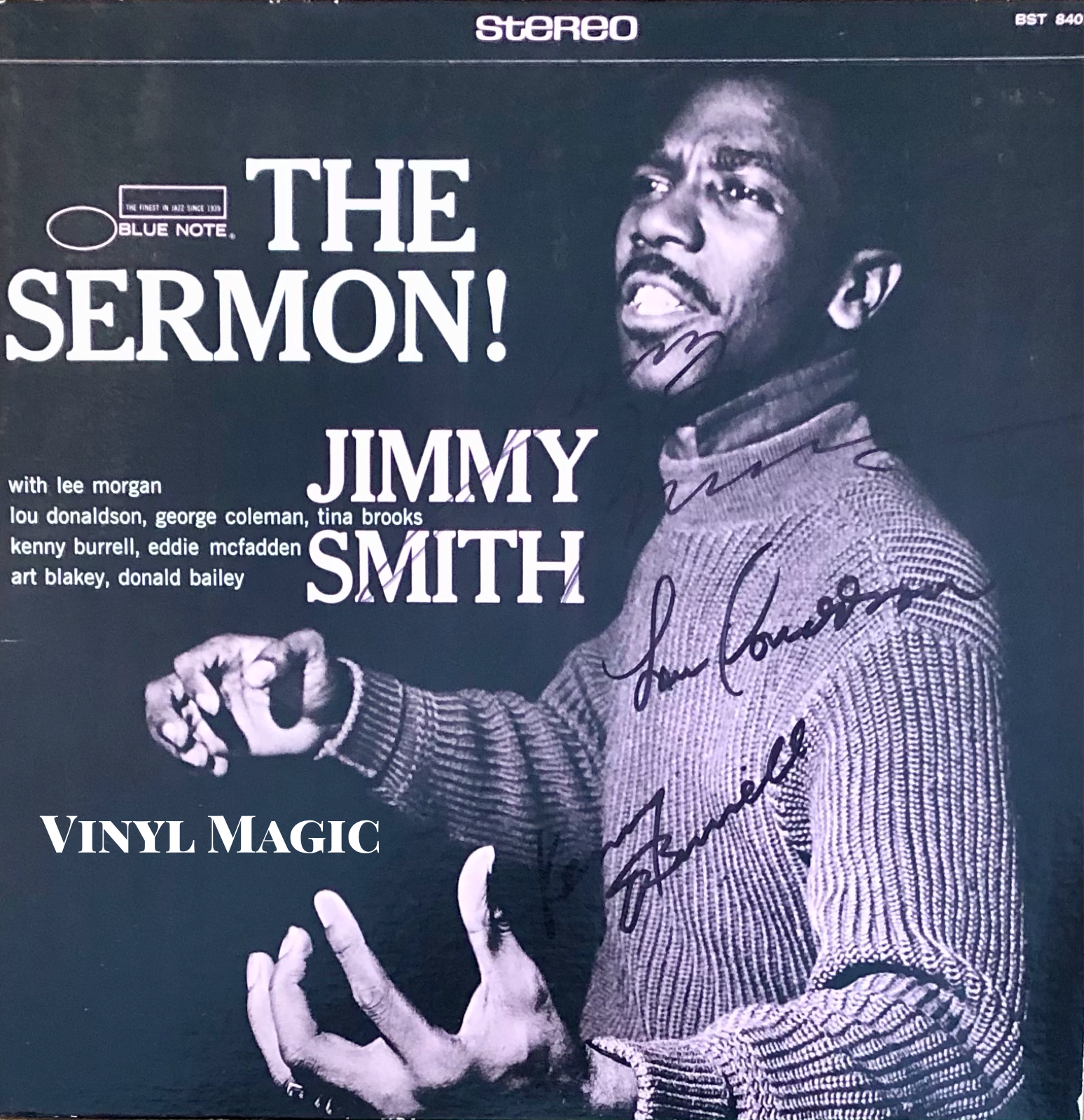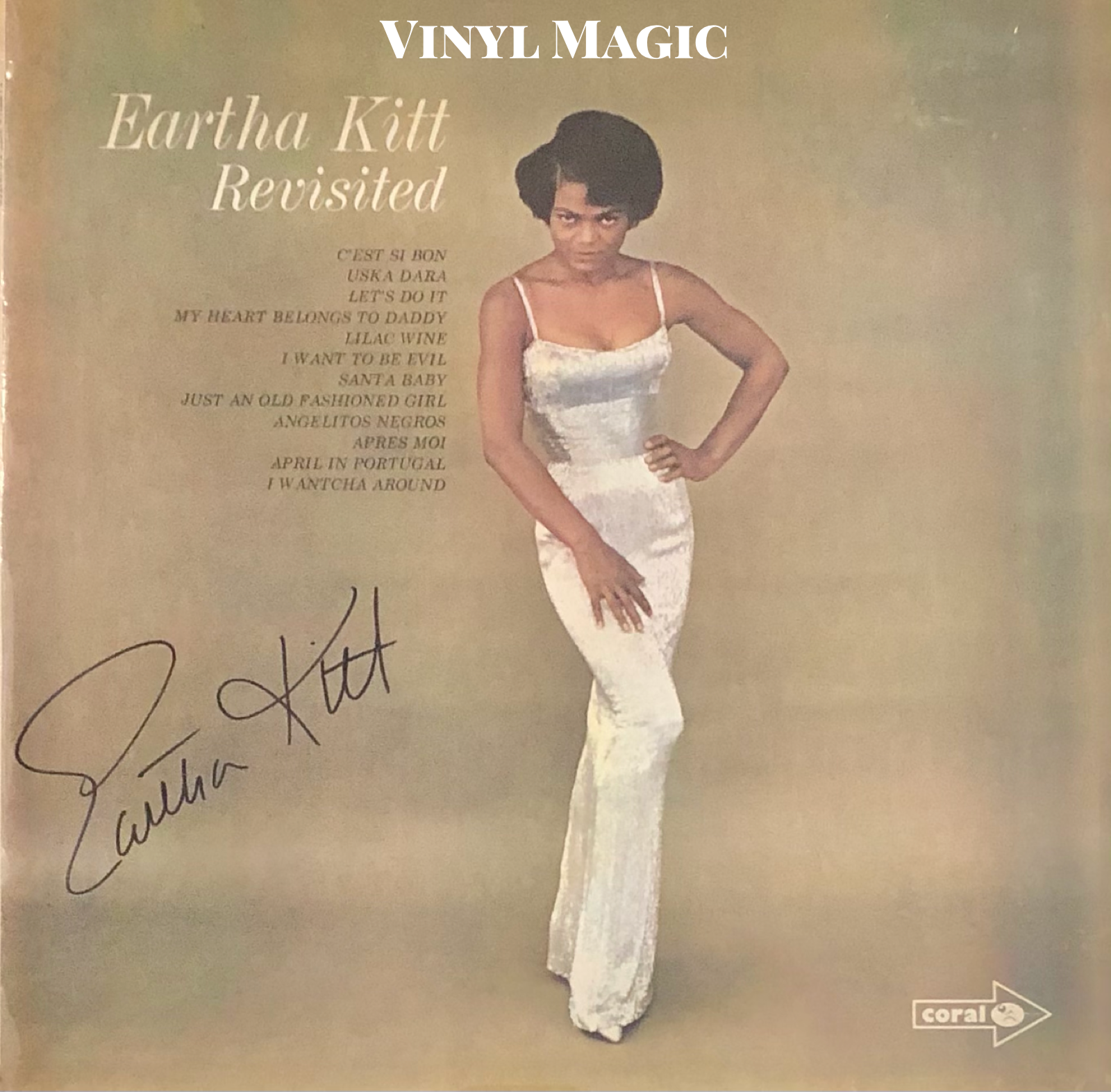Jimmy McGriff, Erin, 9 Ball and Me…
People are always classifying me as a jazz organist, but I'm more of a blues organ player. That's really what I feel.
Jimmy McGriff
I’ve Got. A Woman (1962) signed by Jimmy
We'd see the people and feel them out. Playing for an audience is like trying to romance a woman. You listen to her first so you'll have a better idea of what to say.
Jimmy McGriff
One Of Mine (1964) signed by Jimmy
They talk about who taught me this and who taught me that, but the basic idea of what I’m doing on the organ came from the church, That’s how I got it, and I just never dropped it.
Jimmy McGriff
Jimmy McGriff At The Organ (1965) signed by Jimmy
My father was the one. He turned me around from playing the piano to the organ. I don't know. He was hearing something I wasn't hearing. He told me to play the organ, because I had that gospel thing.
Jimmy McGriff
Blues For Mister Jimmy (1965) signed by Jimmy
He has the sound I was trying to get on the organ. He had it on the horn so I was able to get it more with him. He's not the easiest person to get along with, but I like him. He has his own playing, just like everybody has their own way. I have mine and he has his. It was easy for me because I would play something and then I would ask him, "how do ya like that? And he said, "That's alright.
Jimmy McGriff on Hank Crawford
The Big Band (1966) signed by Jimmy
Jimmy McGriff is a master of the Hammond B3, an organ which uses a Leslie woofer (usually housed in a beautiful wood cabinet) that makes a distinctive whooshing flutter. There is no finer sound in Jazz, Soul or Blues. The great Jimmy Smith (from Philadelphia) is acknowledged as the father of the Hammond B3 in jazz, and he influenced many players including McGriff, Shirley Scott, Charles Earland, and Richard “Groove’ Holmes, all hailing from Philadelphia, the capitol of the Hammond B3 for sure.
Come Together (1973) signed by Jimmy, Bernard Purdie
A Bag Full Of Soul (1966) signed by Jimmy
I saw Jimmy McGriff perform in all sorts of incarnations: traditional trio (organ, guitar, drums), quartet (organ, guitar, drums, sax), and big band. Most Hammond B3 players use the pedals to supply the bass lines, so an electric Fender bass, or acoustic upright bass is unnecessary. There is no thicker, greasier, soulful sound than a Hammond B3 cranked up, Leslie whirring away in the hands of a master like Jimmy McGriff or Jimmy Smith.
Soul Survivors (1986) signed by Jimmy, Hank Crawford “Mr. Frim Fram”
One of the first times I saw Jimmy was in New York City with Hank Crawford. Hank was Ray Charles’ music director before leaving in 1963 for a solo career, and he is a skilled alto saxophonist, composer and arranger. Jimmy and Hank had recently released Soul Survivors(1986), their first release as co-leaders, and they were playing in a (now defunct) club. They were showcasing tunes off their new release, including “Frim Fram Sauce”, a forgotten hit (at least for me) by Nat King Cole. After the show, I had Jimmy and Hank sign the album. I told Hank that I really liked their version of” Frim Fram Sauce”, and a friend of mine’s dad (Joe Ricardel) had written the song. Hank looked at me incredulously, then grumbled “I don’t know about that. Nat King Cole wrote that song.” Yes, Nat sang it but a white dude wrote it, I replied. Hank laughed and signed the album, “Mr. Frim Fram”. Over the ensuing years, I was lucky to see Jimmy and Hank play many more times.
Outside Looking In (1978) signed by Jimmy, Hank Crawford
Steppin’ Up (1990) signed by Jimmy, Hank Crawford
Finally, Erin and I set a date to get married on September 21, 1996. We both have eclectic tastes so a wedding band was going to be the centerpiece; I mean very important. First, we thought of Joe Williams, the great Count Basie vocalist. Joe was stately, regal, urbane and incredibly smooth. And expensive. I saw him at a show. We talked. He wanted $50,000. He was out. Jerry Jeff Walker was another option we considered. He wanted $10,000 (more than we wanted to spend but workable). Jerry Jeff wanted to squeeze us in while he was on tour, so a Tuesday or Wednesday night would work for him. Not for us. Jerry Jeff was also out. Harold Melvin and The Bluenotes? Their hits - “The Love I Lost”, “Bad Luck” “Don’t Leave Me This Way” “I Miss You” - while potent on the dance floor, were not exactly the best wedding content.
Electric Funk (1969) signed by Jimmy
In late 1995, I saw Hank and Jimmy play again, and they were promoting their new release, Blues Groove, which featured “All Blues” by Miles Davis and Joe Zawinul’s “Mercy, Mercy, Mercy”. I thought they would be great. I talked it over with Erin, and she said go for it. So I called Tel Arc, Jimmy’s record label based in Ohio . They referred me to his agent In Phoenix, and I spoke with her. She said she didn’t think Jimmy had ever done a wedding, but might be interested. She gave me a price with Hank and without. Hank Crawford was expensive. Hank was out. I had to pay for the Hammond B3 rental, the hotel room for Jimmy and his band, a sound guy with equipment, and Jimmy's fee. The venue was to be in our back yard, a black tie swank affair for two hundred-fifty guests. Contracts signed, this is gonna be great.
Step 1 (1969) signed by Jimmy
The day of the wedding, Jimmy had his band set up by the pool. It is a beautiful night. Jimmy wants cash in full before he performs. I count out the cash and hand it to him. I ask, ‘Have you ever played a wedding before?’ “Yes. Three. My best friend from the police academy (hard to believe, but Jimmy was a policeman for two years in Philly!), my sister’s, and yours.” We talked about the playlist his agent had sent me. I only had three requests: “Let’s Stay Together” – the Al Green soul classic which was our first dance, “My Way” – written by Paul Anka for Frank Sinatra which Jimmy transformed into a ten minute simmering sanctified soul burner, and “Lil’ Darlin” – the great Neal Hefti composition from the Count Basie canon. Whatever else you want to play, just keep the folks groovin’, I suggested. Jimmy's done this before, we are in the hands of a master.
A Thing To Come By (1969) signed by Jimmy
The guests begin to arrive, and we start with an hour long cocktail party with light hors d’oeuvres before the wedding begins. My friend, Chief Judge Loren Smith, US Court of Federal Claims, officiates. My beautiful bride appears, and there has never been anyone more beautiful. Before Erin begins her walk, Jimmy and his band (Wayne Boyd on guitar, Don Williams on drums, and Marshall Keys on sax) break into a grooving, sensuous, slow burn version of the "Wedding March." It was so good. The guests start swaying, I am on the steps under the pergola, where we are about to marry, smiling and grooving. Jimmy doesn’t want to stop, the guests feel the same way, Marshall Keys starts blowing his second solo, I give the sign (reluctantly) to stop.
Black Pearl (1971) signed by Jimmy
We are now married, nuptial bliss ensues. The band starts to raise the temperature. “Mercy, Mercy, Mercy”, Harold Mevin’s “Hope That We Can Be Together Soon”, a scorching “My Way”, “a bluesy “Lil’ Darlin”, and a scintillating “Let’s Stay Together”, our first dance, get everyone hopped up and (hopefully) making bad decisions. After the second set, Jimmy and the band take a brief intermission and go for a tour of my basement and music collection, which I am proud to host.
Jimmy sees the pool table, says he loves to play. A game of chance?, I suggest. "9 Ball" comes the reply from Jimmy, "The only game." We lag for break, I win. A crowd gathers. The 4 ball goes in off the break, then I sink the one ball. I make a ridiculous 2-9 combination. Game over. Jimmy rolls his cue. No reason for a rematch, it’s your day, he says as he moves away from the table. I retire from the competition. Undefeated.
Jimmy McGriff and Me - September 21, 1996
Marshall, Jimmy and Me…
Don Williams notices a signed Arthur Prysock album framed on the wall next to the McGriff and Crawford Soul Survivors album. Don tells me that he played with Arthur for years, and Arthur bought him his first real drum set. Don seemed wistful, as he said that Arthur was really sick, suffering from dementia. Where is he now? I ask. “He is in the islands talking to the coconuts in the trees.” We finish the tour. Jimmy and the band decide to play a third set, even though it wasn’t in the contract. They were having so much fun, they didn’t want to stop. And neither did any of our guests.
Jimmy, Don Williams and Wayne Boyd checking out the archives
Erin and Me…nuptial bliss
Jimmy and I stayed in contact over the years and I saw him many times after our wedding. I showed him pictures of our growing family (now three kids), and he was so enthusiastic and gracious.Despite his declining health, due to diabetes and MS, he was playing almost until the end. I told Jimmy that our kids loved music, and they were happy and healthy because of the great start they got from his amazing performance at our wedding on September 21, 1996.
First dance, Jimmy and Marshall Keys cooking “Let’s Stay Together.”
Jimmy and Marshall
The Mean Machine (1976) signed by Jimmy
Groove Grease (1971) signed by Jimmy
Christmas With McGriff (1964) signed by Jimmy
Christmas With McGriff (1973 reissue with Jimmy’s niece!
A Bag Full Of Blues (1967) signed by Jimmy
Tailgunner (1977) signed by Jimmy
City Lights (1981) signed by Jimmy
Choice Jimmy McGriff Cuts (per BKs request)
https://www.youtube.com/watch?v=umAVOKVmNg0
“Let’s Stay Together” Sky Walk 1984
https://www.youtube.com/watch?v=xjCpGl1jU5I
“My Way” City Lights 1981
https://www.youtube.com/watch?v=1hUux41Fe1g
“Frim Fram Sauce” Soul Survivors 1986
https://www.youtube.com/watch?v=DqLYEr9yW8Q
“I’ve Got A Woman” I’ve Got A Woman 1962
https://www.youtube.com/watch?v=nO-O8si8pA4
“Things Ain’t What They Used To Be” with Groove Holmes 1974
https://www.youtube.com/watch?v=bEJQ4XUkfEo
“Signed, Sealed, Delivered” Soul Sugar 1971
https://www.youtube.com/watch?v=6qlH3tKTgv8
“Hope That We Can Be Together Soon” Road Tested 1997
https://www.youtube.com/watch?v=zwr6sNdnou4&list=PL83GhjNrLsgW4i1amLDnED5vgaFkDzjiN&index=3
“Oh Happy Day” A Thing To Come By 1969
https://www.youtube.com/watch?v=aiq6GXalqxc
“Mercy, Mercy, Mercy” Blues Groove 1995
https://www.youtube.com/watch?v=HY1LmlGbgH4
“Honky Tonk” Montreux 1992 with Jimmy Smith
https://www.youtube.com/watch?v=THK5FVuptp0
“Everyday I Have The Blues” live with Hank Crawford, 1989
https://www.youtube.com/watch?v=SNnaFKZuBtg
“Keep Loose” live late ‘60s
The Groover (1982) signed by Jimmy
Countdown (1983) signed by Jimmy
Skywalk (1984) signed by Jimmy
State Of The Art (1985) signed by Jimmy, Dr. Lonnie Smith
Blue To The ‘Bone (1988) signed by Jimmy, Al Grey, Bernard Purdie
Soul Survivors (1986) signed by Jimmy, Hank Crawford, Bernard Pretty Purdie







